How the New York Times helped sell Donald Trump's tax hike
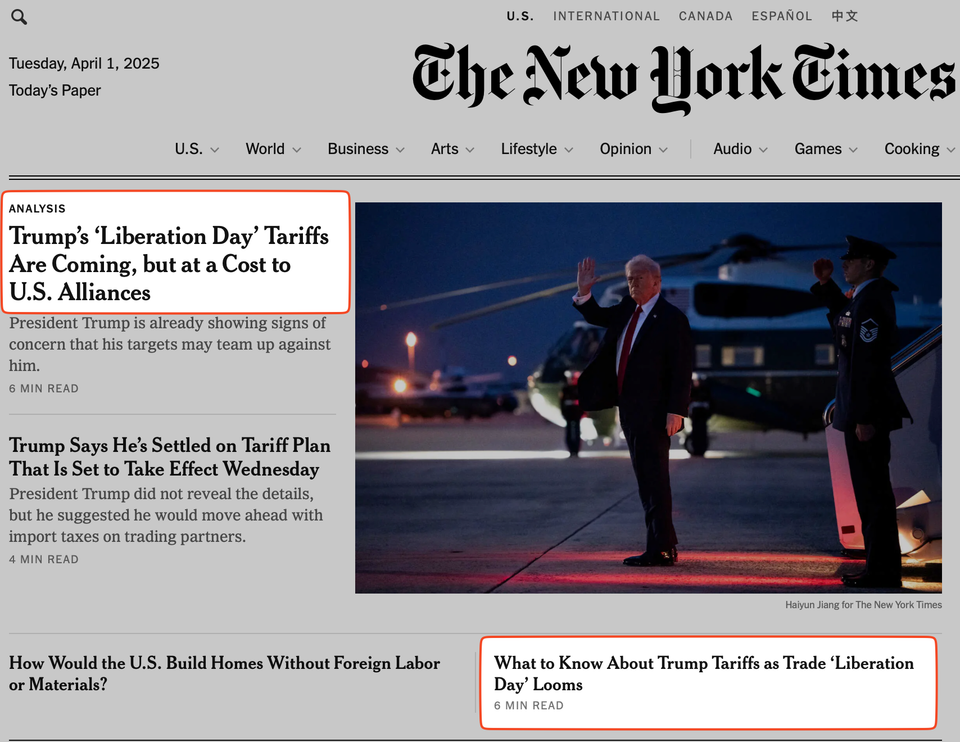
The most important thing to know about Donald Trump’s massive tax hike — that’s what tariffs are — is that it will raise prices on many of the goods Americans buy, from cars to clothes to cabbage, and, according to economists across the political spectrum, it risks crashing the U.S. economy. If you were a news company whose goal was helping the American people understand what Trump is doing, that’s what you’d focus on: The effects the tariffs would have on the American people.
But what if you were trying to sell Trump’s tax hike? You certainly wouldn’t focus on the crushing economic burden it would place on American households. You might, instead, try to preemptively pin the blame for the pain on some foreign Other. That’s pretty much Fascism 101 — maintain your grip on the people you are trying to rule by making them resent someone else. And, indeed, that’s the approach the Trump administration took, touting its tariff announcement as “Liberation Day” (intended to make people feel like they were being freed from some oppressive foreign ruler) and “reciprocal tariffs” (intended to make people think Trump’s taxes merely level the playing field by imposing on others tariffs equal to those imposed on us.) Neither of those things is true, of course: The U.S. economy the day Trump walked back into the Oval Office was among the strongest in the world, and the tariffs Trump just announced are not equal to the tariffs other countries place on U.S. goods. But if you were trying to convince the country Trump’s tariffs are good and fair, those are the kind of lies you would tell.
So with that in mind let’s take a look at how the New York Times covered Trump’s tariff announcement in the weeks leading up to it and the hours following it:
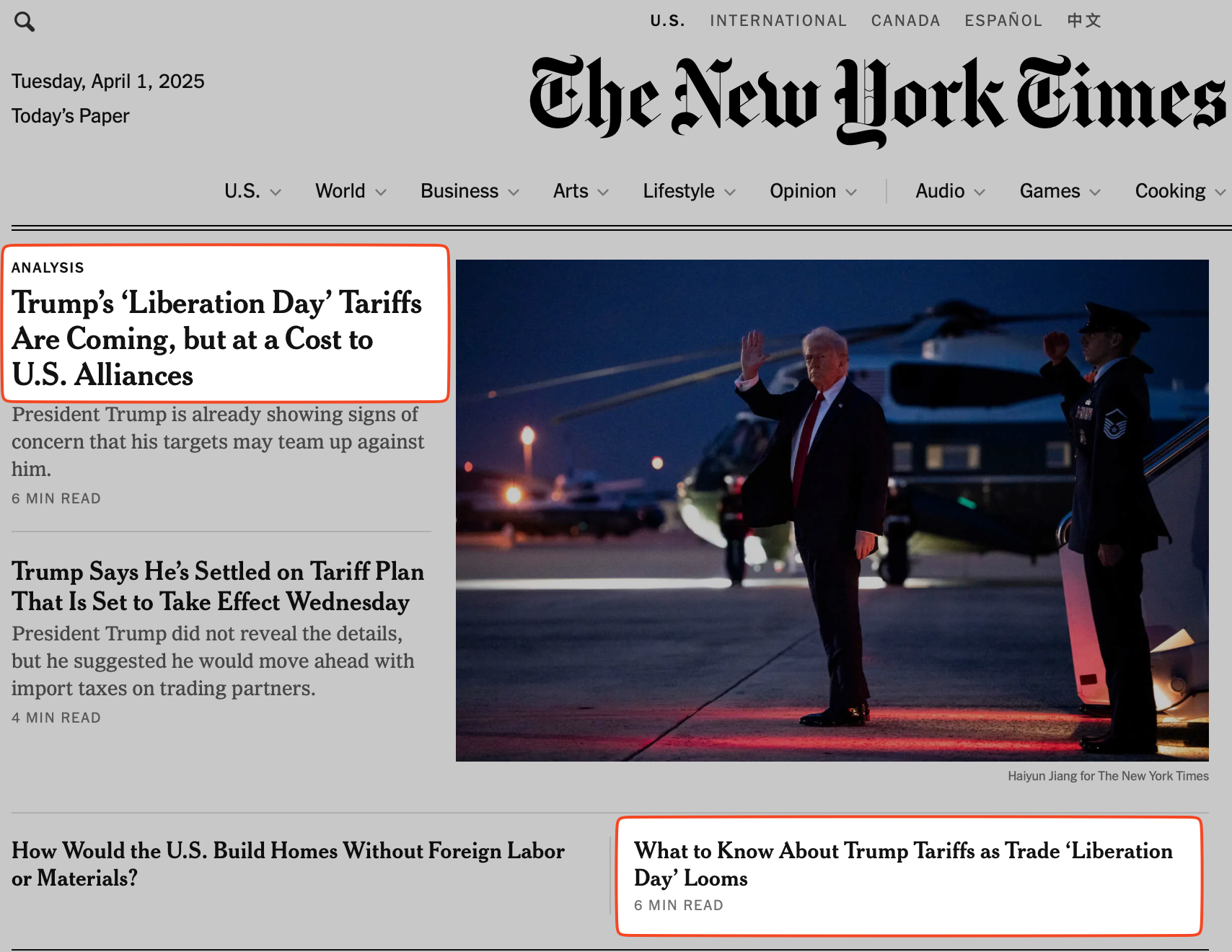
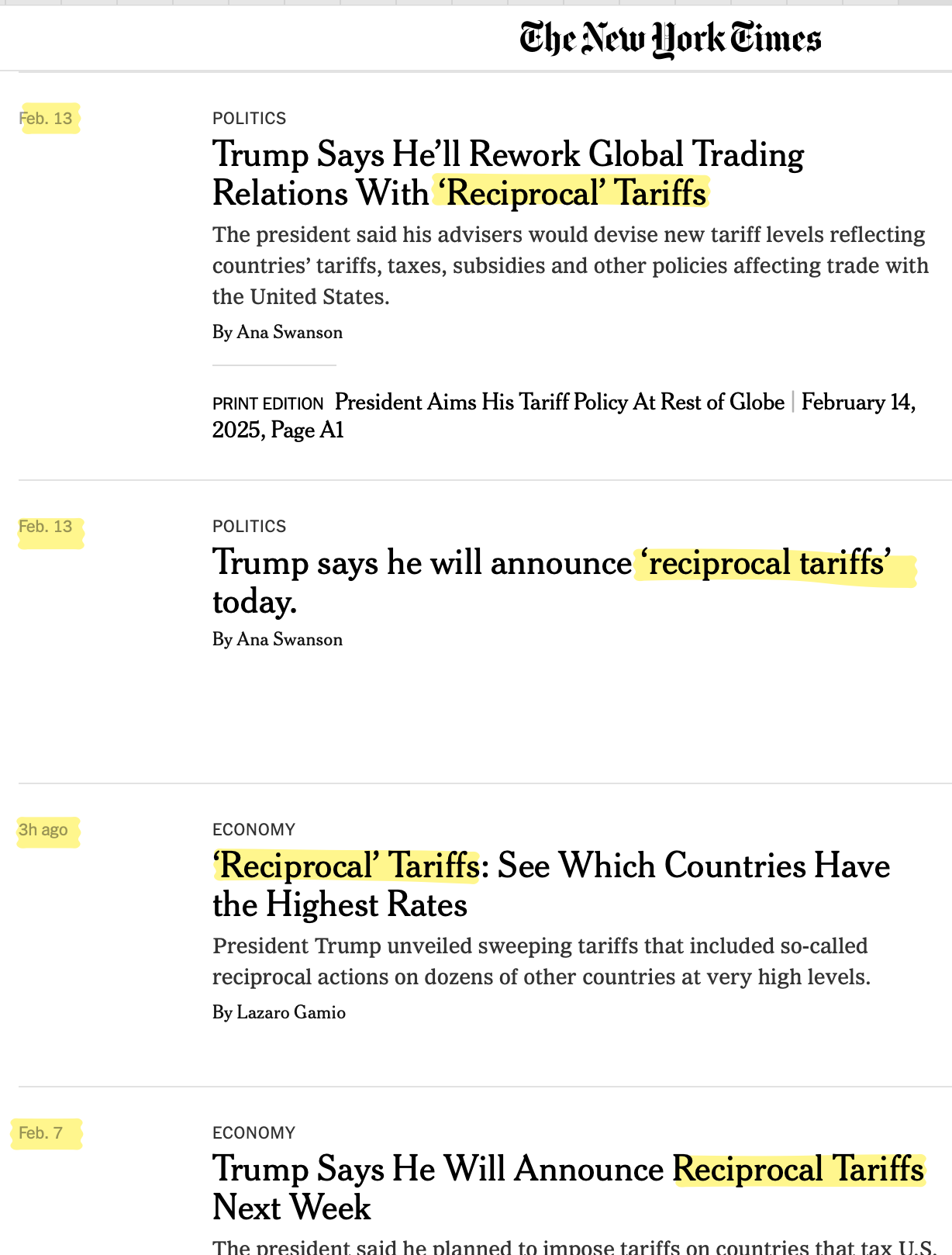
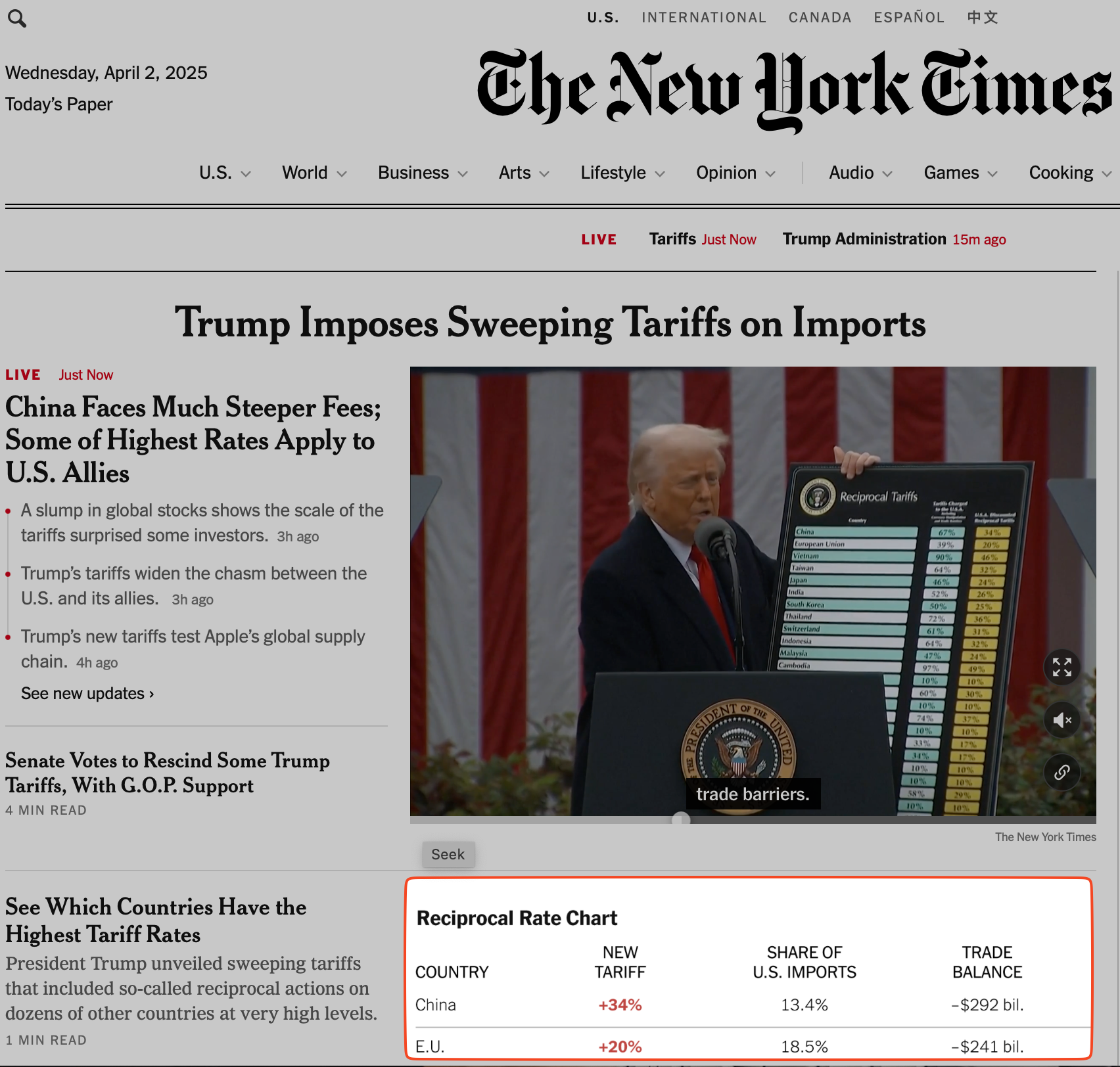
That’s … not great. Entire articles peddling the “reciprocal tariffs” nonsense without so much as a hint at the fact that there’s nothing reciprocal about them.
So let’s take a moment to discuss how Trump came up with the tariffs in question. For a given nation, the Trump administration calculated the tariffs it would impose by dividing America’s trade deficit with that nation by the value of goods America imports from that nation. Why? Because it felt like it, that’s why.
A foundational premise of the Trump tariff policy is that all trade deficits are inherently “cheating.” Here’s an actual quote from a Trump aide: “The trade deficit that we have with any given country is the sum of all trade practices, the sum of all cheating.” This is what is known in technical economic terms as “stupid.” Sometimes you have a trade deficit because someone has something you want to buy and you buy it but you don’t sell them anything because you don’t have anything to sell them. For example: I have a trade deficit with the guy at the farmers’ market who sells me zucchini and onions. He sells me stuff but I don’t sell him anything: Trade deficit. But the guy is not “cheating” me, he’s just selling me vegetables.1
So anyway, the tariff rate you get as a result of that absurd calculation is, definitionally, not equal to the tariffs the other nation applies to goods it imports from the U.S. It’s just something else entirely. “Nothing in this formula tells you anything about either tariffs or non-tariff trade barriers,” as Washington Post economics columnist Catherine Rampell put it.
Apparently the Trump administration felt pretty sheepish about how nonsensical the whole thing was, because when they got around to publishing their formula they dressed it up with some fancy Greek symbols that … don’t mean anything:
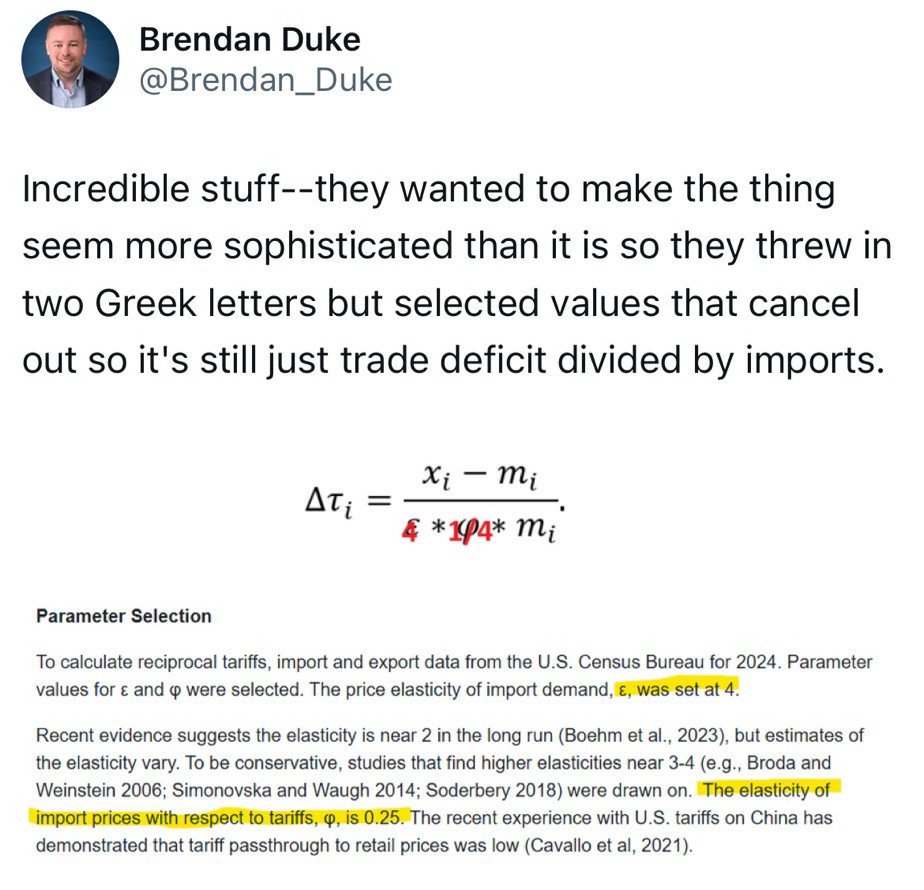
Yeah, that’s right: In order to make their formula look more sophisticated, the Trump administration sprinkled in some Greek letters that cancel each other out. Sorry, I know this is a lot of math.2 For the math-averse: This is basically the equivalent of a high school sophomore increasing the font size and margins on an essay in order to meet the page length requirement.
If you somehow still aren’t convinced that there’s nothing “reciprocal” about these tariffs, I will conclude by noting that the Trump administration applied them to, among other places, antarctic islands with no human inhabitants:
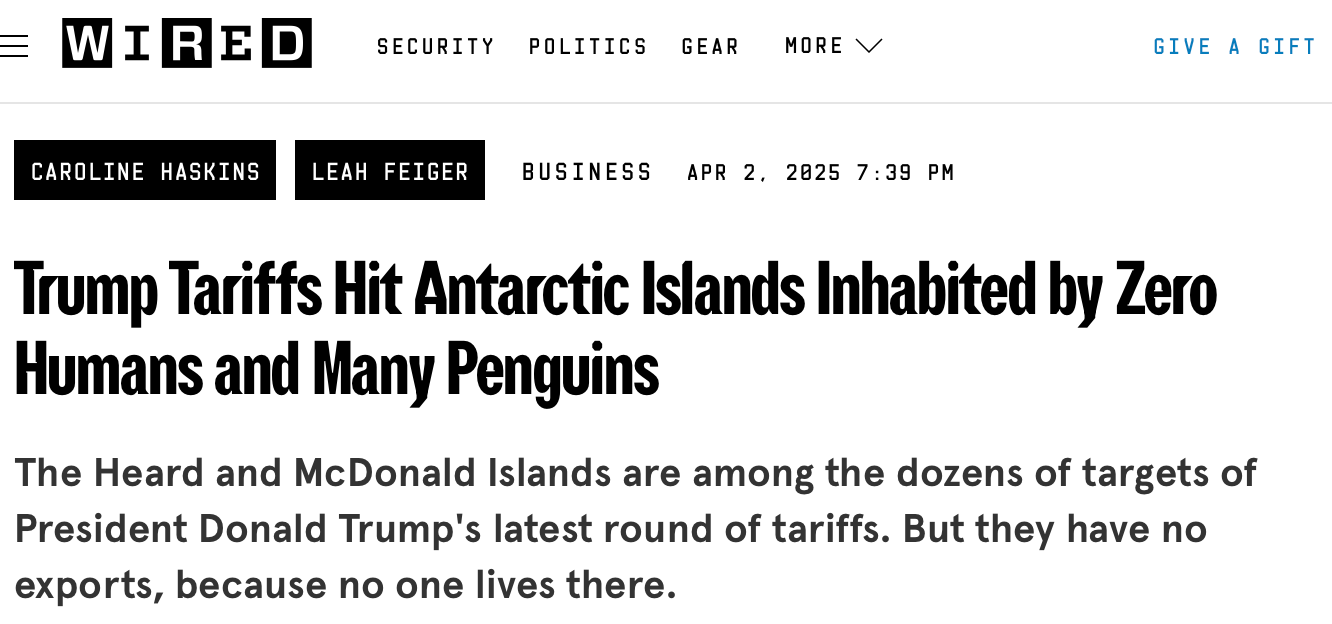
Needless to say, the penguins of the Heard and McDonald Islands have not been imposing freedom-crushing tariffs on America.
So the whole “reciprocal” thing is 100 percent bullshit — bullshit the New York Times eagerly peddled, along with the “Liberation Day” propaganda.
While visitors to the New York Times’ website were getting a heavy dose of Trump propaganda, they weren’t getting a clear picture of the impact Trump’s tax hike would have on them. To the contrary, the Times framed Trump’s tax hikes as something foreign nations would pay:
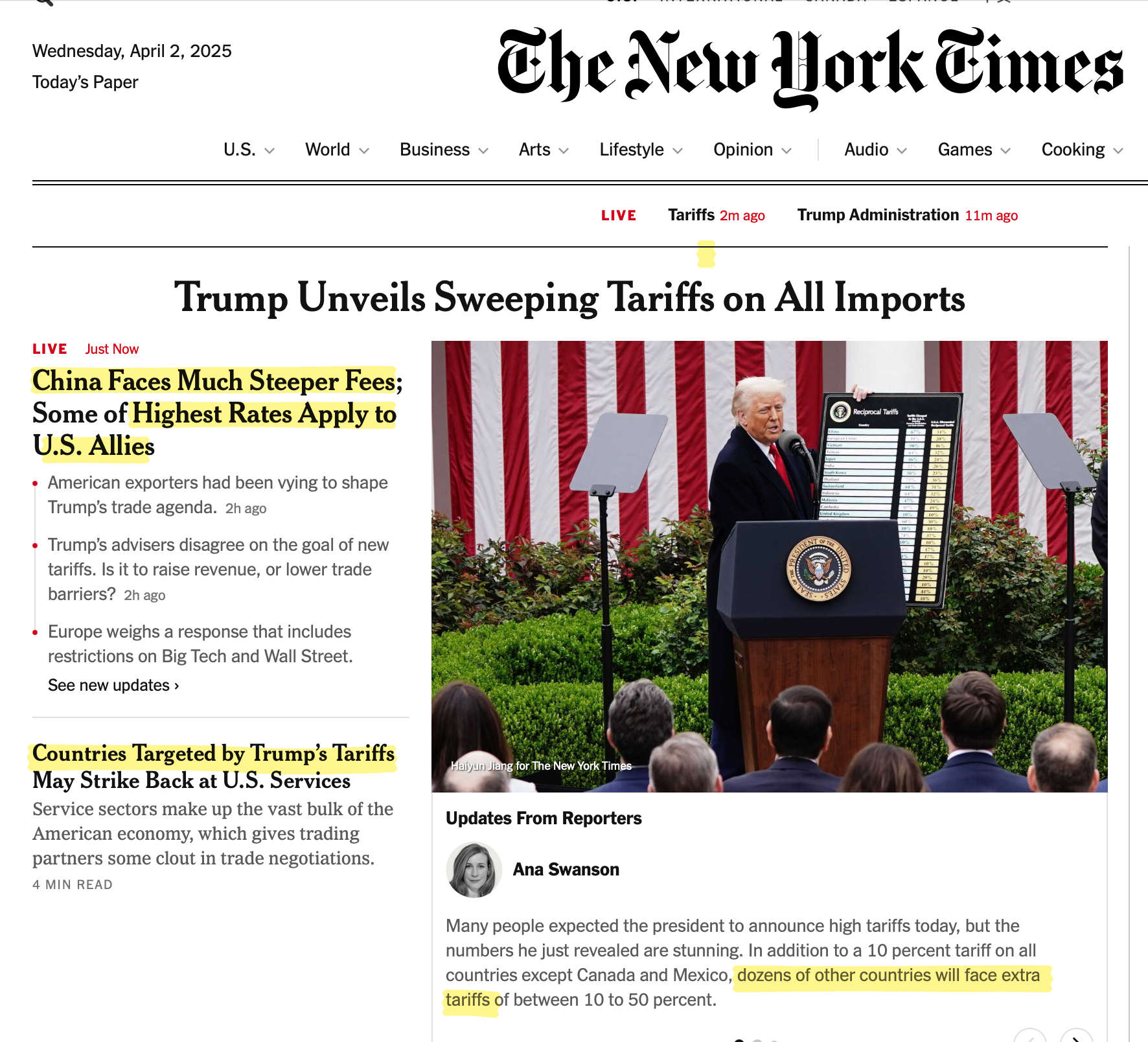
But — of course! — the tariffs Trump imposed on goods imported from other countries will simply raise the price paid by American consumers for those goods. “China” isn’t paying those tariffs; you are. The Budget Lab estimates a $3,800 increase in costs per American household per year as a direct result of Trump’s tariffs.

And then there are the consequences of the projected harm the tariffs will do to America’s economy — like lower GDP and higher unemployment, which tends to bring lower wages. Oh also the stock market is in free fall.

And yet even when The New York Times ran an article explicitly billed as “what you need to know” about Trump’s tariffs, it waited until the 32nd paragraph to tell readers “Estimates vary, but given the scale of Mr. Trump’s new tariffs, American households could see thousands of dollars of additional costs annually” — and until the 39th paragraph to mention the possibility of recession: “Economists at Fitch Ratings said in a note Thursday that the tariffs had significantly raised the risk for a recession in the United States.”
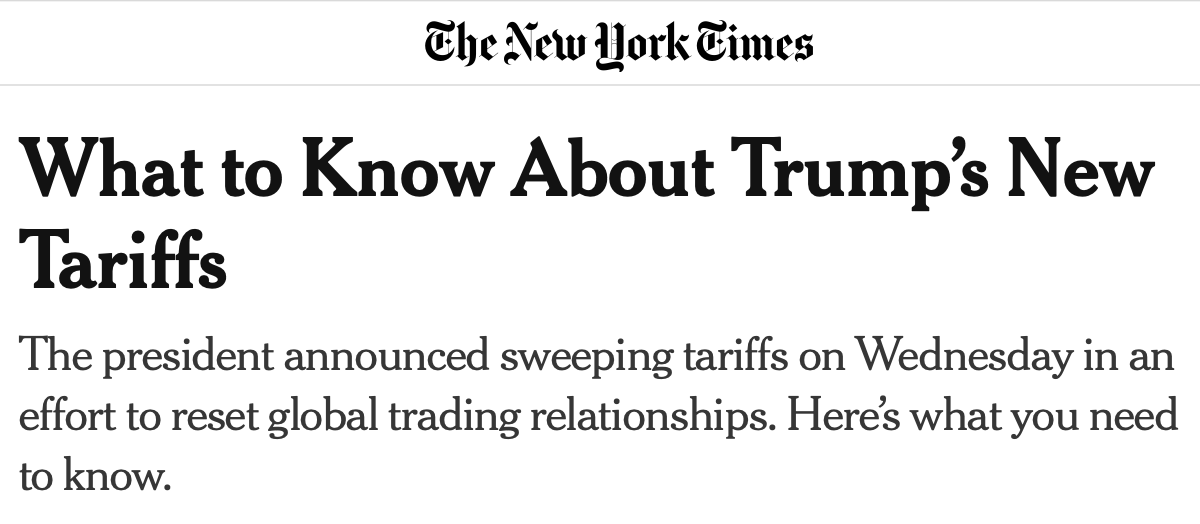
It’s important to understand that this isn’t a case of the New York Times mishandling a chaotic and unpredictable development: The paper has been peddling Trump’s rhetoric on tariffs for months, and has known they were coming since last year, when the Times was hard at work trying to blur the differences between Trump and Kamala Harris:
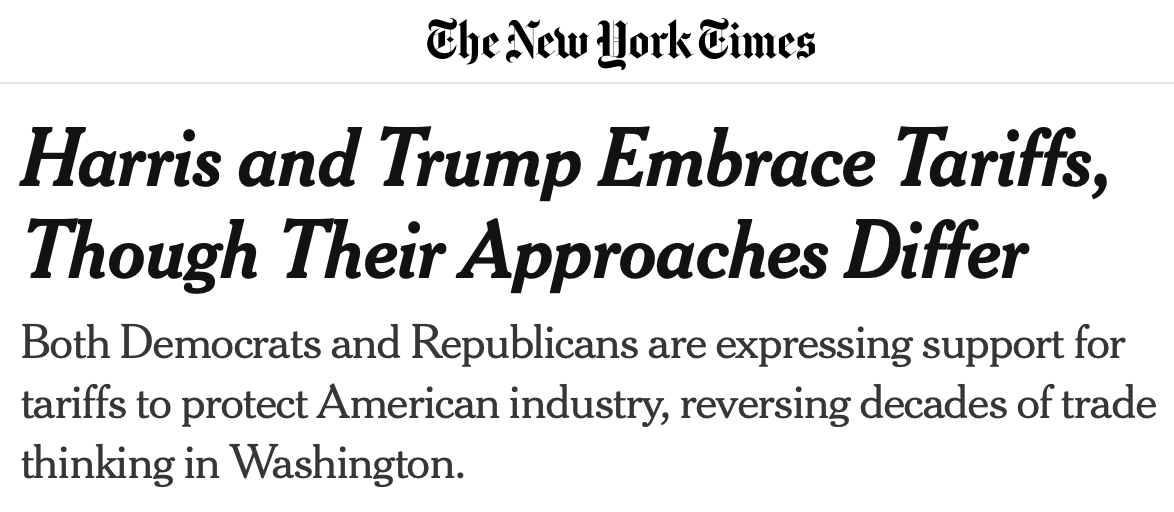
Member discussion